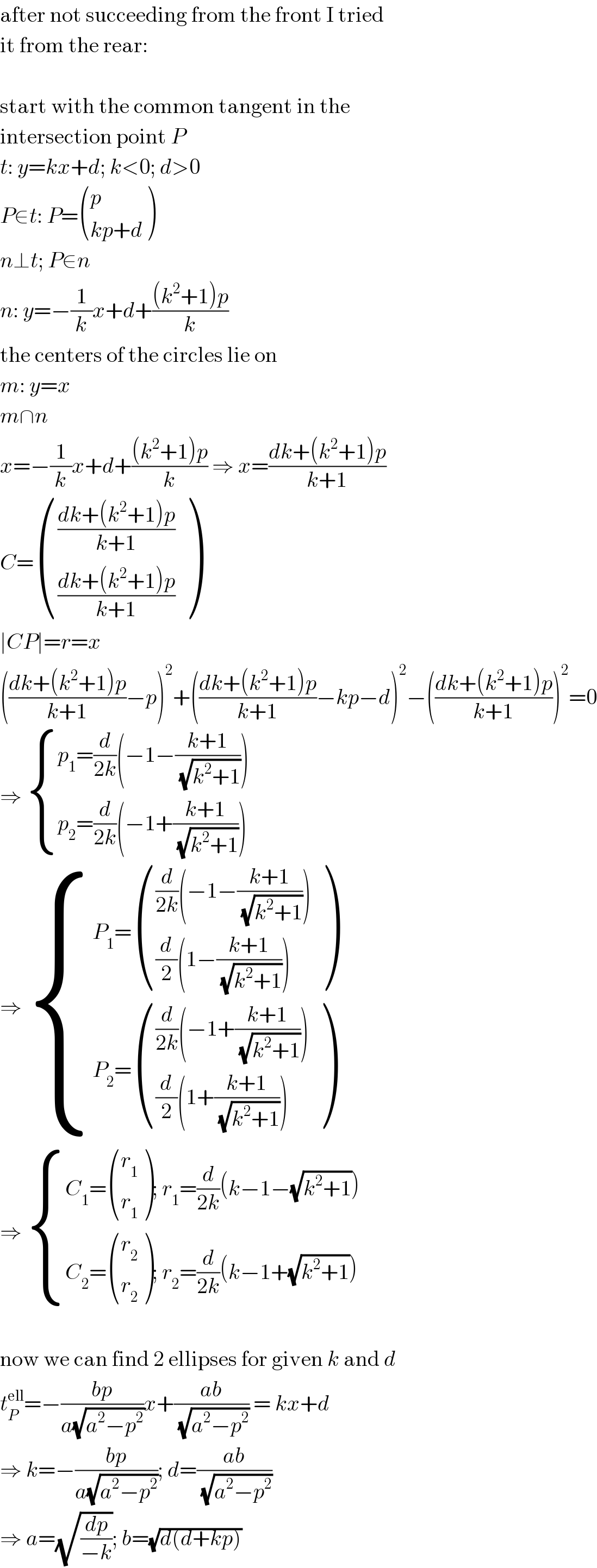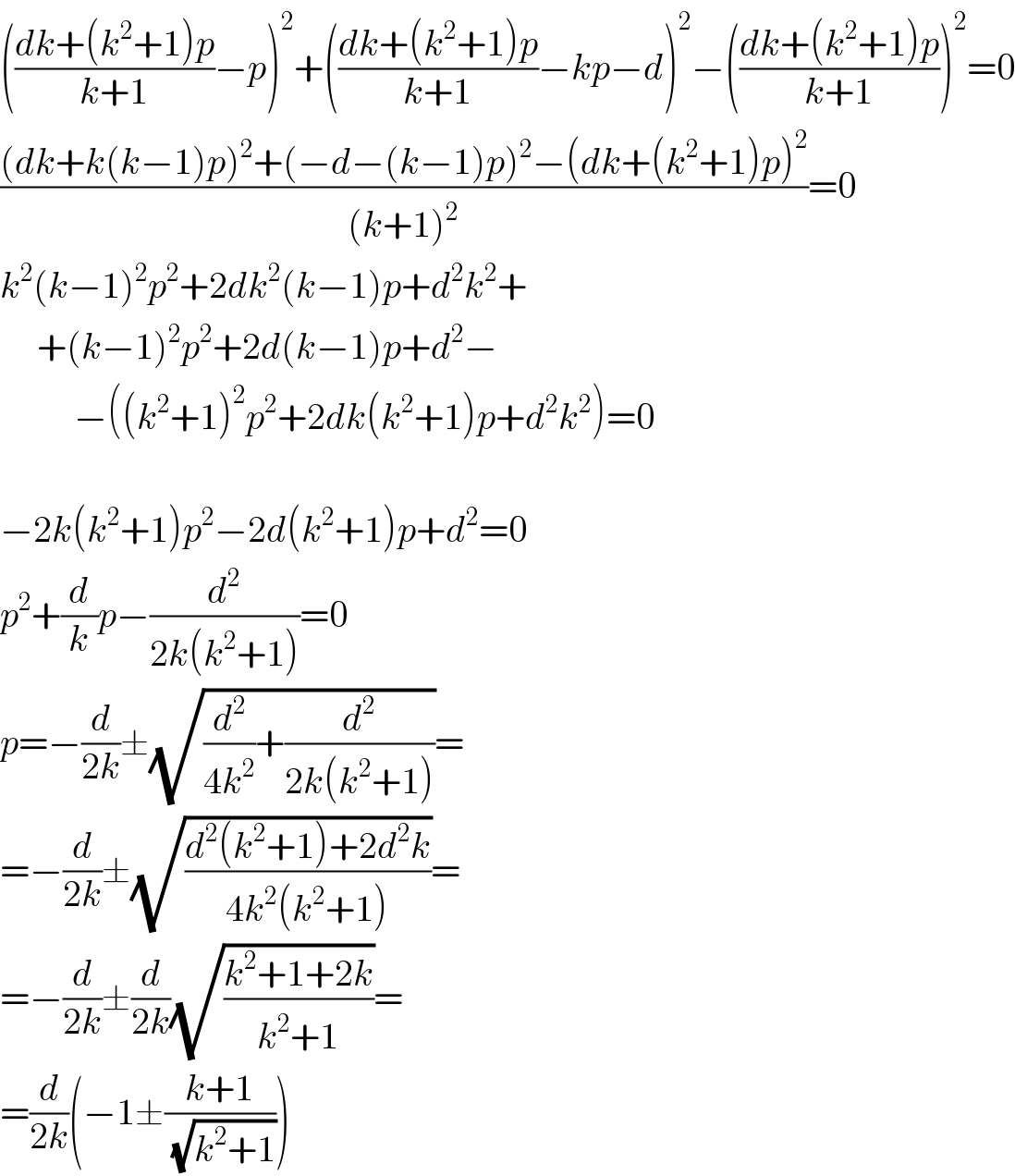
Question and Answers Forum
Question Number 38092 by ajfour last updated on 21/Jun/18

Commented by ajfour last updated on 22/Jun/18

Commented by MJS last updated on 22/Jun/18

Commented by MJS last updated on 22/Jun/18

Commented by ajfour last updated on 23/Jun/18

Commented by MJS last updated on 25/Jun/18

